Are you struggling to choose between the Canon 6D Mark II and the Canon 7D Mark II? Do you want to know how these two cameras stack up against one another? Wondering who’d win in a bout between the Canon 6d vs 7d?
We’ve got you covered.
In this article, I’ll give you a rundown of the Canon 6D Mark II versus the Canon 7D Mark II. You’ll discover all the great features of each Canon camera – and you’ll learn how they compare.
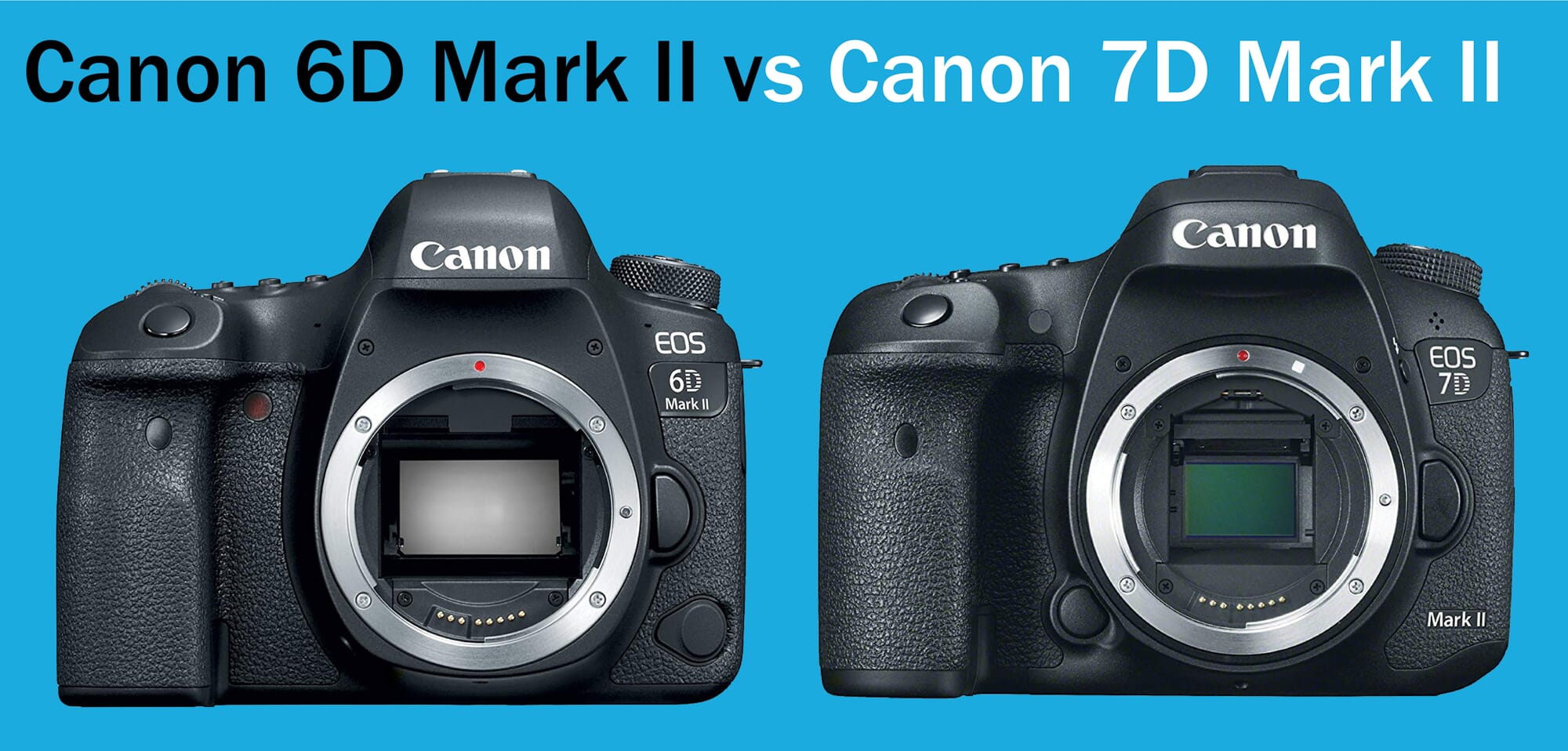
Canon 6D Mark II vs. Canon 7D Mark II:
When you buy through links on our site, we may earn a commission at no cost to you. We evaluate products independently. Commissions do not affect our evaluations.
1. Overview
First things first:
The Canon 6D Mark II is a newer camera than the Canon 7D Mark II. The Canon 7D Mark II came out in 2014, while the Canon 6D Mark II came out in 2017.
This alone should give the Canon 6D an edge. Technology changes fast, especially in higher-level Canon cameras. And the Canon 6D specs bear this out. The Canon 6D Mark II sports a new processor, an upgraded LCD screen, and more.

And let’s not forget one of the crucial differences between these two cameras: The Canon 6D Mark II is full-frame, whereas the Canon 7D Mark II is APS-C.
Also Read: Full Frame vs Crop Sensor Cameras
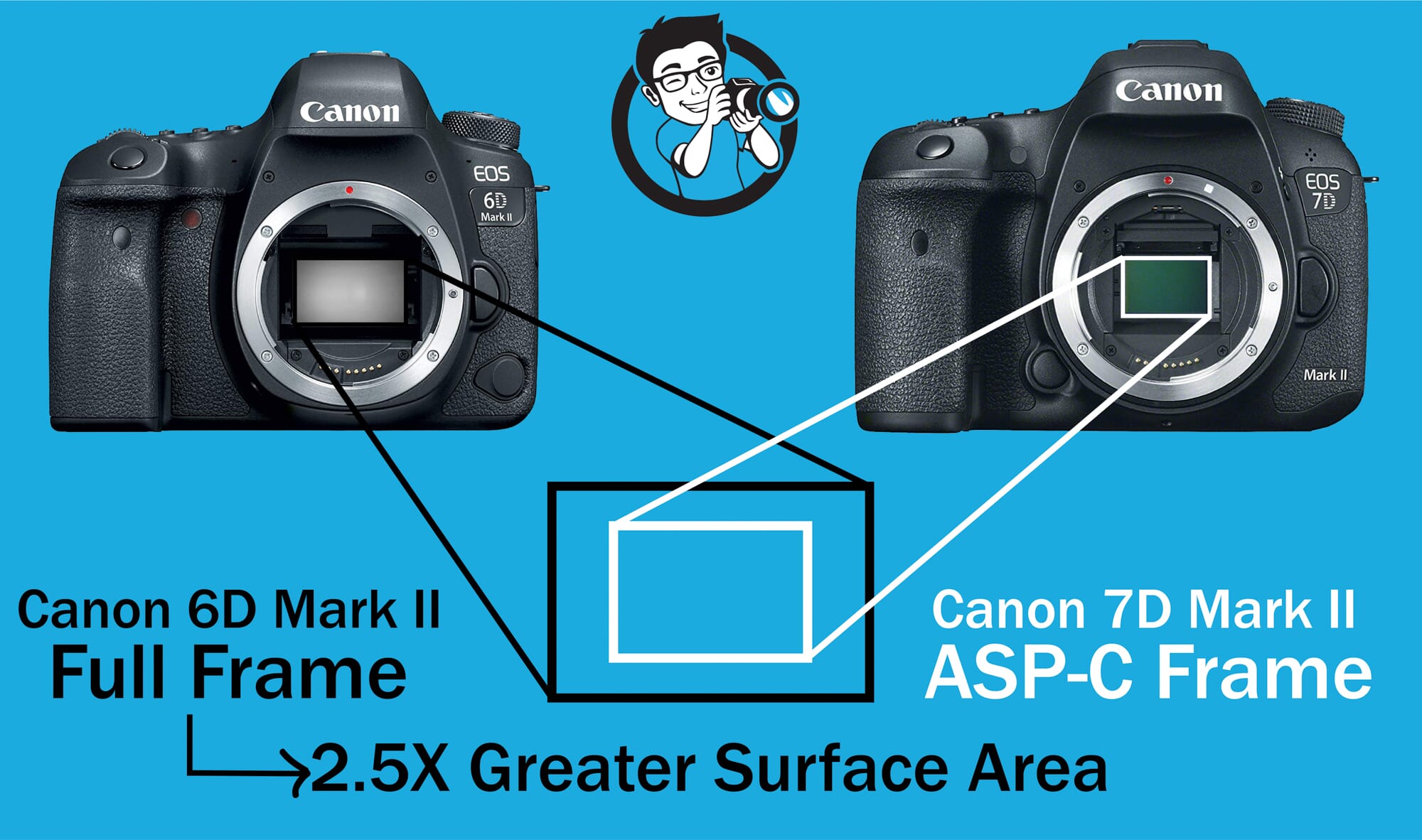
Despite its more-impressive technology, the Canon 6D is only slightly more expensive than the Canon 7D; for two powerful DSLRs, they’re both quite affordable.
Let’s check out the specifications between the Canon 6D vs 7D:
Invalid table id.Notice that the Canon 6D offers both larger pixels and higher resolution. On the other hand, the Canon 7D includes more autofocus points and a higher continuous shooting rate.
So Which Should You Buy?
The newer Canon 6D Mark II? Or the older but still impressive Canon 7D Mark II?
That depends on your goals as a photographer.
If you’re a wildlife, sports, or bird photographer, you’re going to love the 10 fps and strong autofocus performance of the Canon 7D Mark II. You’ll also appreciate the 1.6x crop factor of an APS-C body.
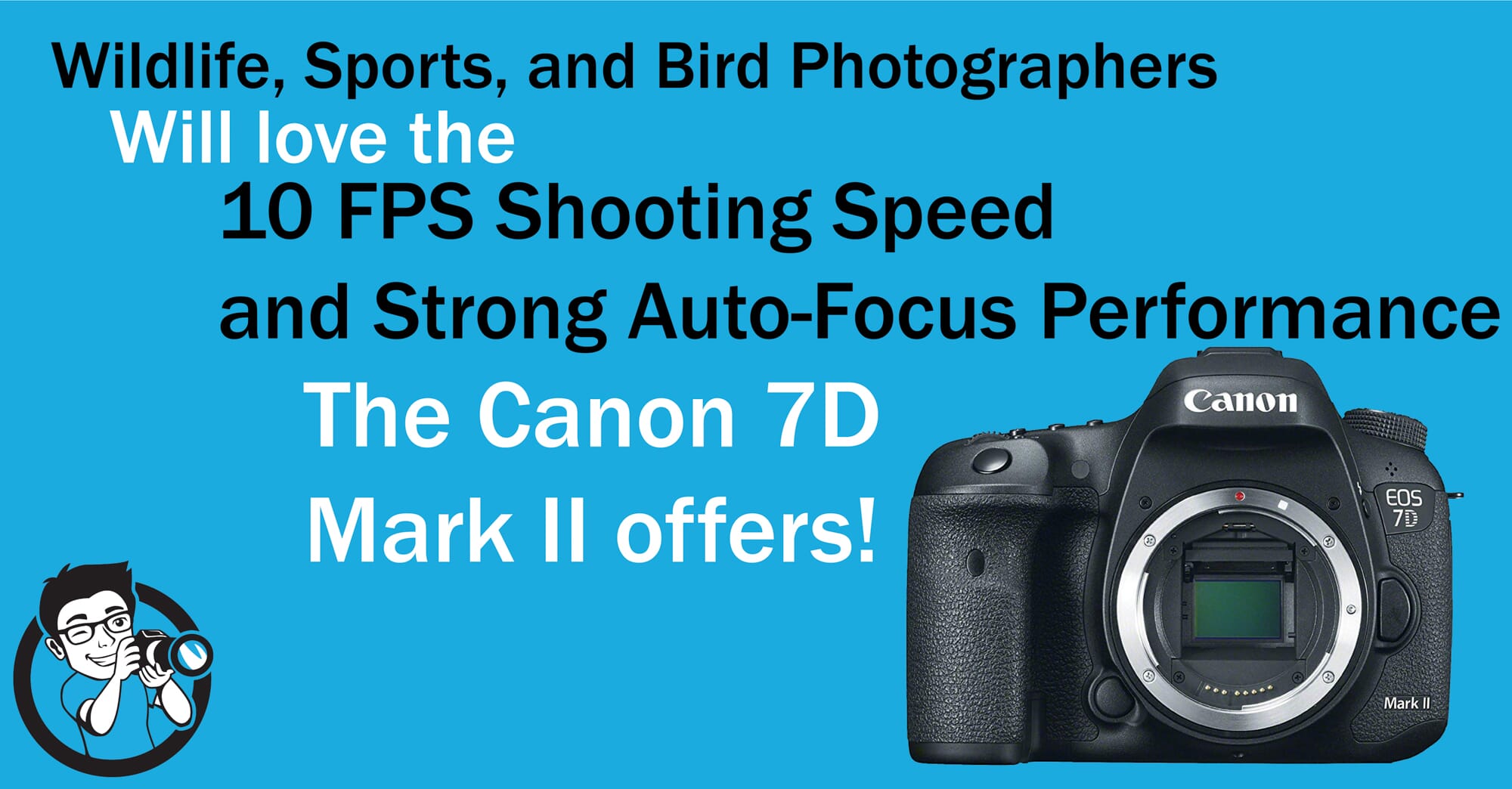
On the other hand, if you shoot landscapes, portraits, macro, or street photography, you’ll like the increased resolution on the Canon 6D Mark II – not to mention the full-frame sensor with improved low-light performance over the 7D.
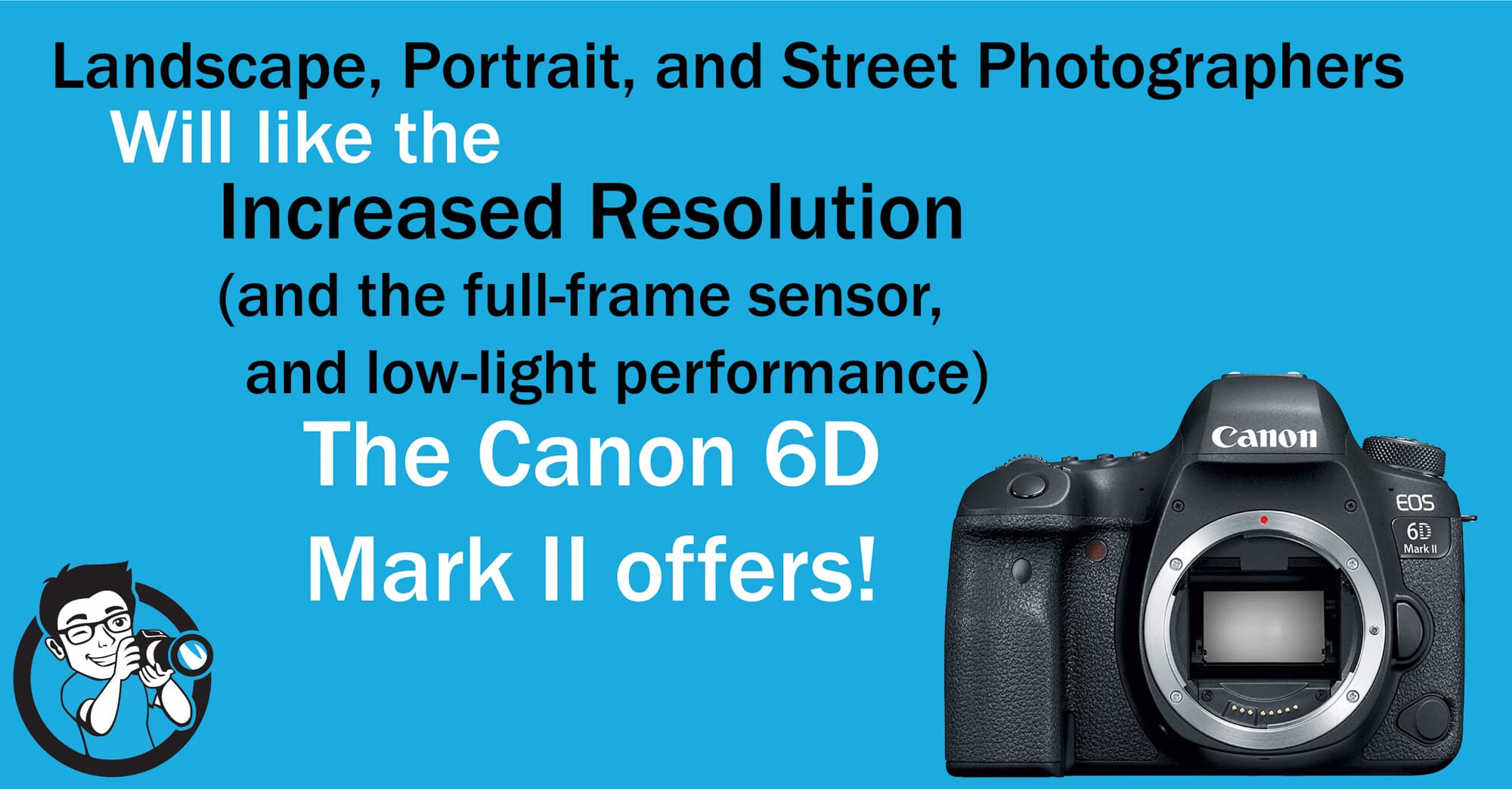
2. Build-Quality and Accessories
Both the Canon 6D Mark II and the Canon 7D Mark II are weather-sealed. But the Canon 7D Mark II has a more rugged body overall. The Canon 7D Mark II is made up of magnesium alloy. Whereas, the Canon 6D Mark II has a mix of aluminum and polycarbonate materials.
So, if you tend to work your cameras hard, the 7D will suit your shooting style.
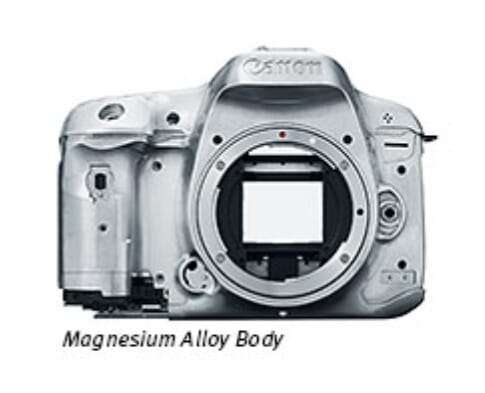
So if you’re an outdoor photographer – especially if you’re a wildlife photographer – you’re going to love the increased durability of the 7D. But if you don’t tend to push your gear hard, the magnesium alloy won’t do you much good, and you’ll find the extra weight annoying.
What About Battery Life?
Regarding battery life, the Canon 6D Mark II does noticeably better than the Canon 7D Mark II. You can take about 1200 shots per charge with the 6D Mark II.
That’s in comparison to the 670 shots per charge of the 7D. If you love to take your setup out for long treks, the battery performance on the Canon 7D Mark II leaves something to be desired.
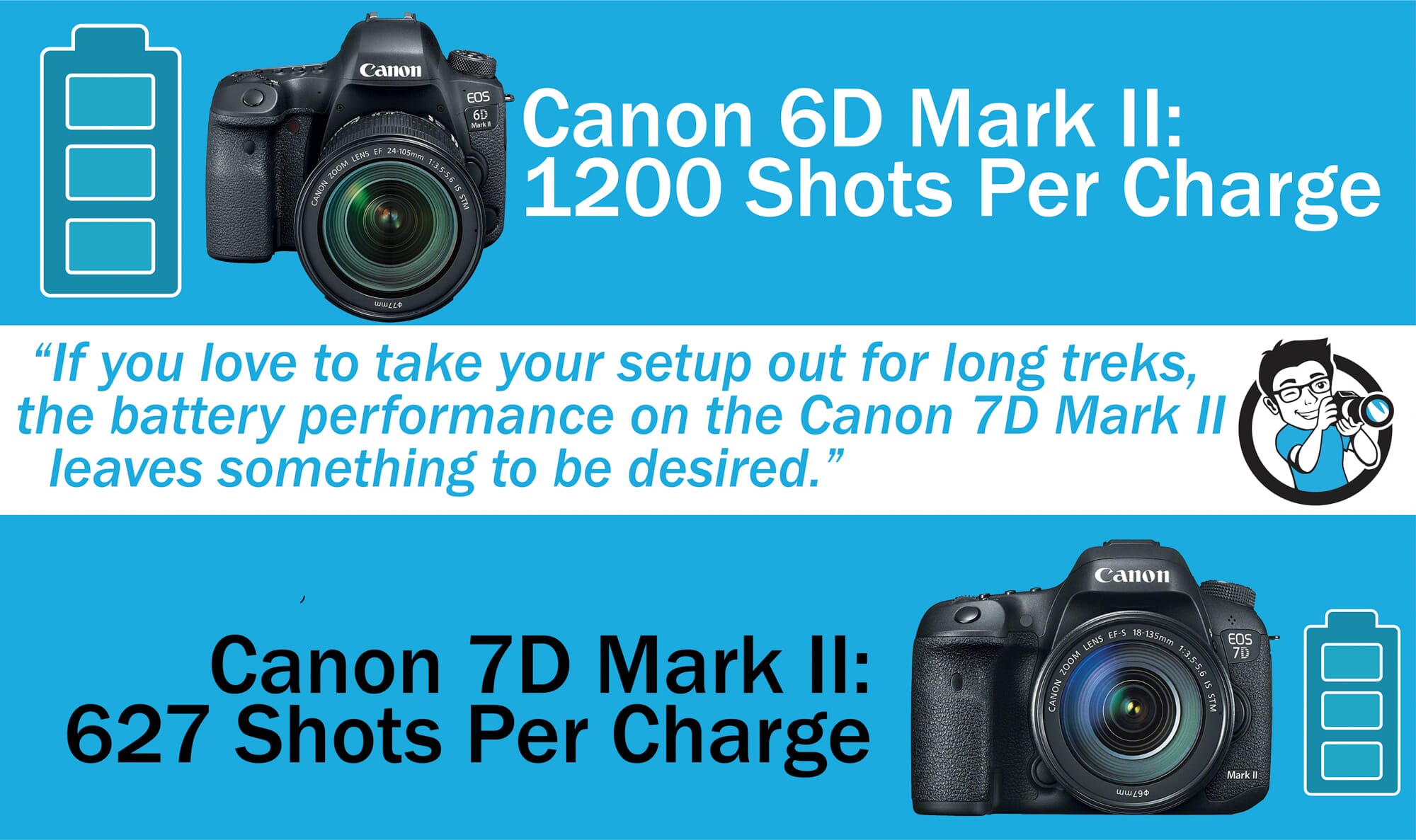
Finally, I’d like to mention something that’s bound to be frustrating for pro shooters:
The Canon 6D Mark II only has a single (SD) card slot. This is in comparison to the Canon 7D’s dual SD and CF slots.
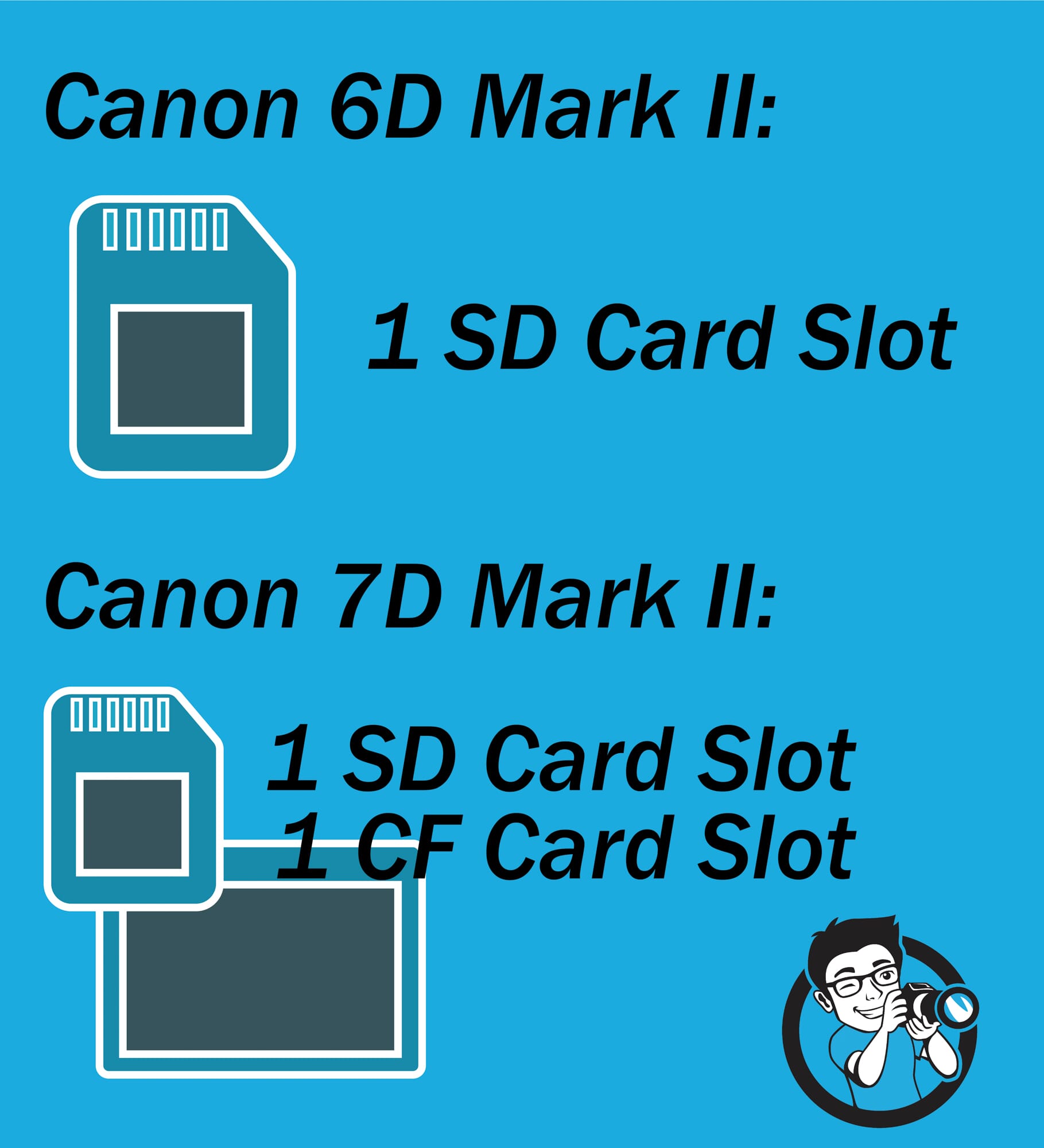
Is this a dealbreaker?
For some, yes. Dual card slots are a must-have for many event photographers, who want to create two copies of every shot. Same for landscape photographers, who like to create immediate backups in the field.
Winner: Canon 7D Mark II
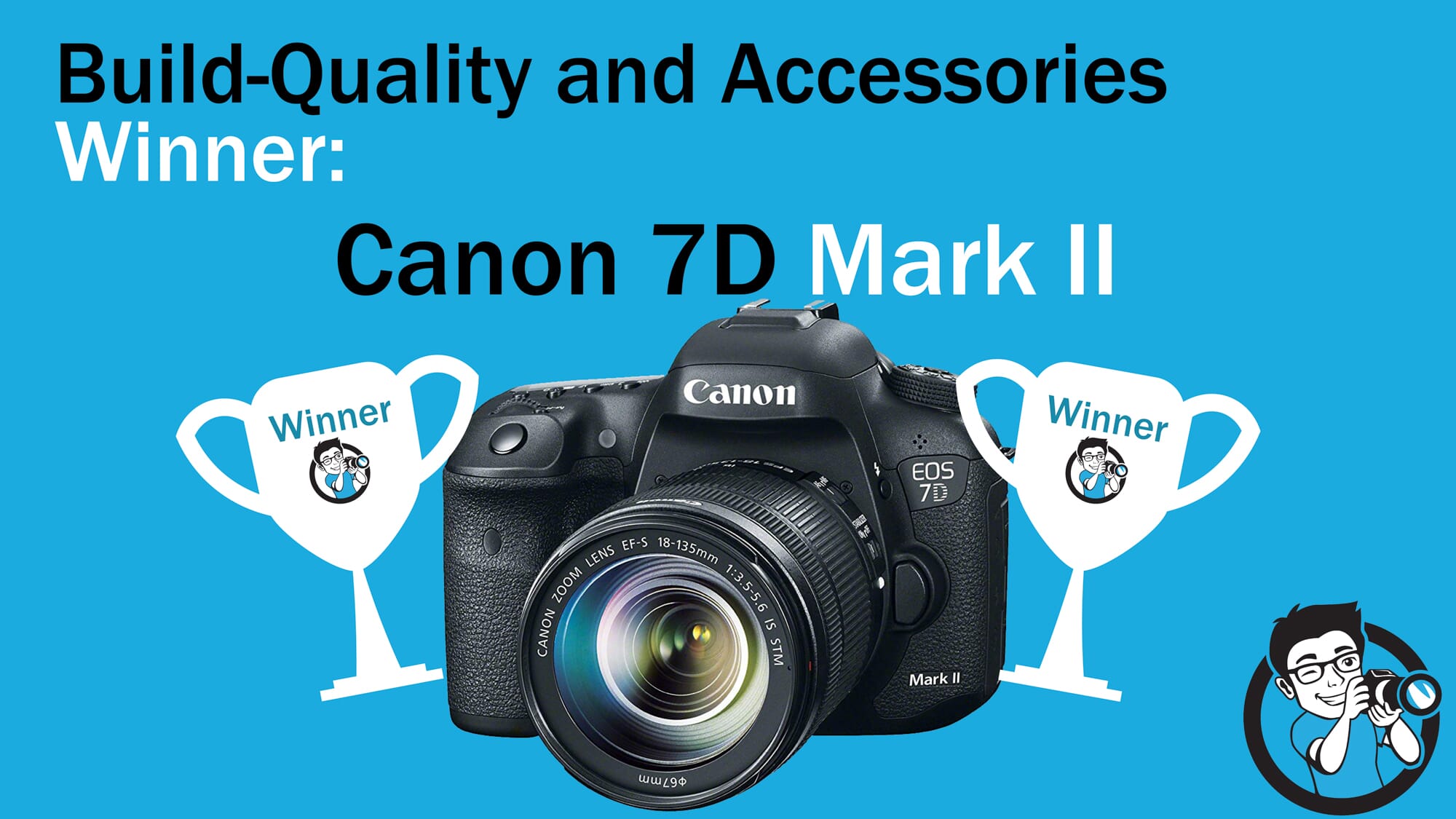
3. Video, Screen, and Viewfinder
Both the Canon 6D and 7D offer identical video performance: You can capture 1080p footage up to 60 fps.
Notice the lack of 4K video on both bodies. If you like to do videography, you may find this frustrating.

Articulating Screen, Anyone?
The Canon 6D Mark II does come with a nice articulating screen. This means that you can flip it out, tilt it, or swivel it.
If you’re a vlogger, you’ll love this feature.
And if you’re a photographer who often shoots in uncomfortable positions, you’ll appreciate it, too.
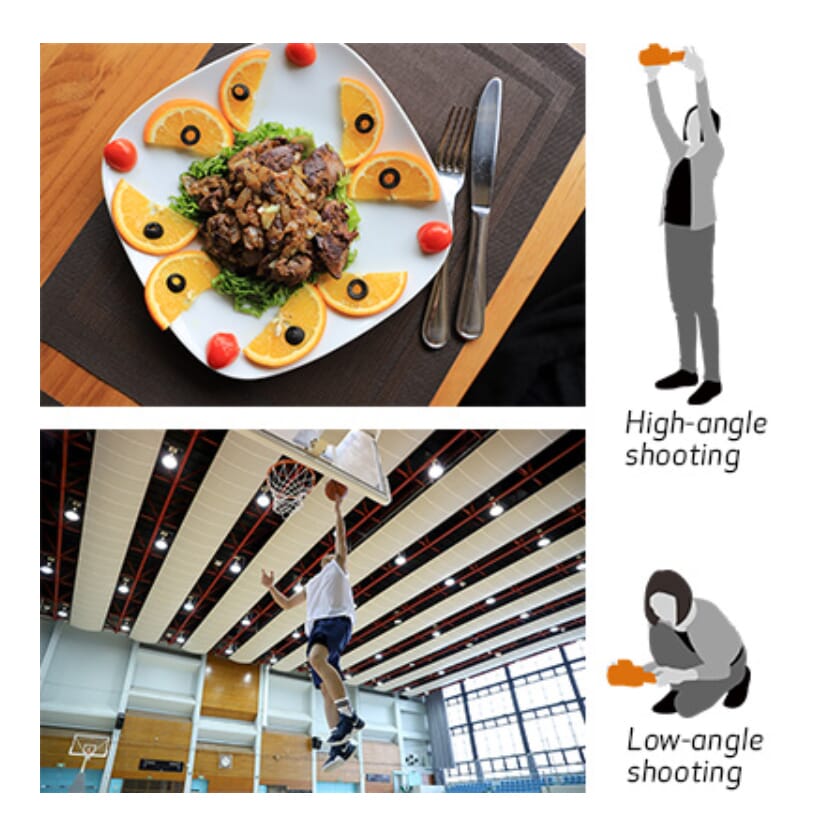
The 6D also offers touchscreen functionality.
The Canon 7D Mark II, on the other hand, offers none of this technology. Its screen is an immobile LCD.
It’s worth noting that the Canon 7D Mark II offers 100 percent viewfinder coverage, in comparison to the Canon 6D’s 98 percent.
Unfortunately, this doesn’t make up for the lack of an articulating touchscreen.
Winner: Canon 6D Mark II
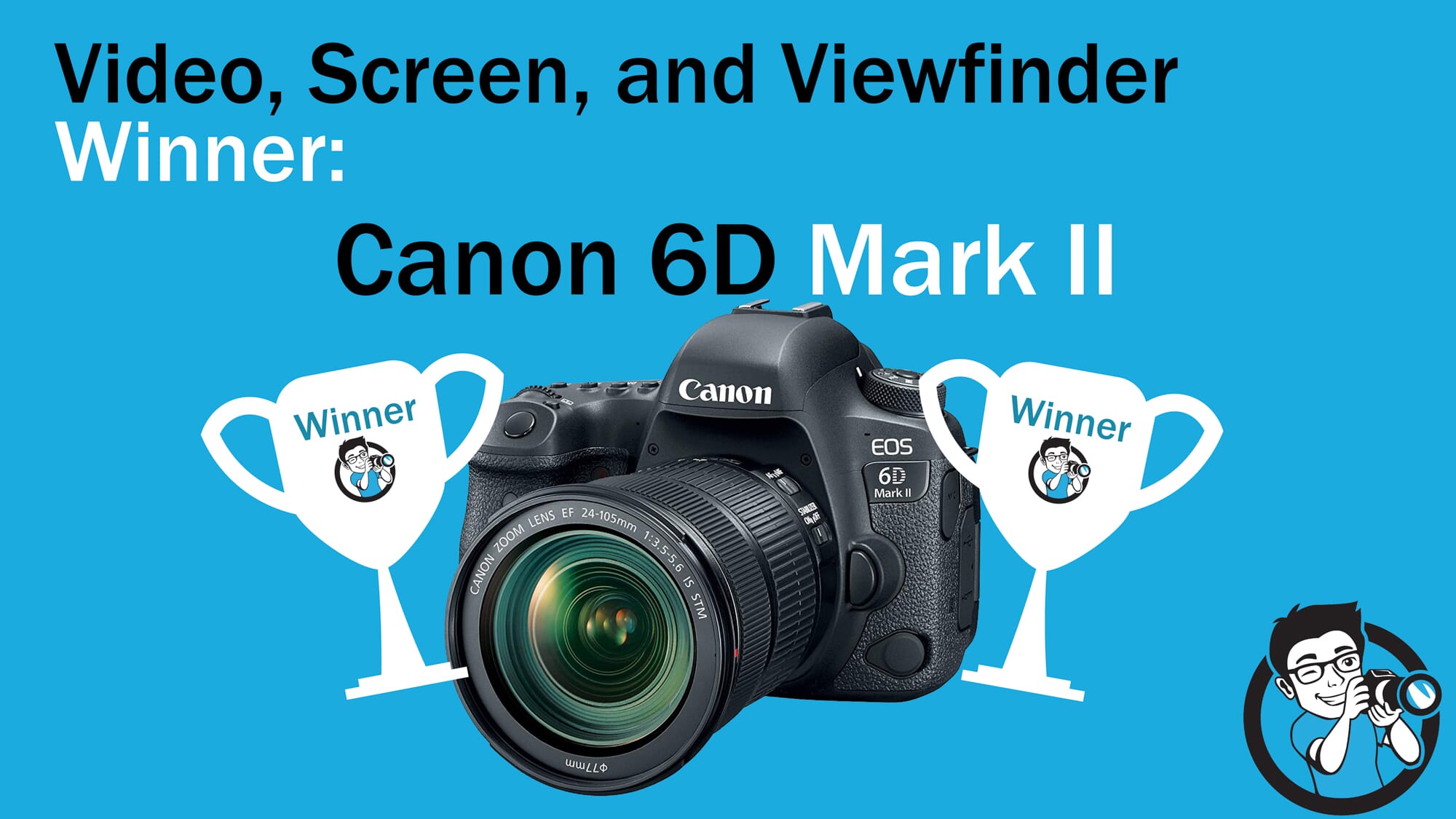
4. AF Performance and Continuous Shooting
For action photographers (including wildlife, bird, and sports photographers), strong autofocus performance and fast continuous shooting are essential.
So how do these two cameras compare?
Let’s start with autofocus:
The Canon 6D Mark II Has:
- 45 cross-type AF points
- Dual pixel phase-detection autofocus
- Autofocus points concentrated toward the center of the frame
- AF working range of EV -3 to 18
And the Canon 7D Mark II?
- 65 cross-type AF points
- Dual pixel phase-detection autofocus
- Autofocus points spread out across the frame
- AF working range of EV -3 to 18
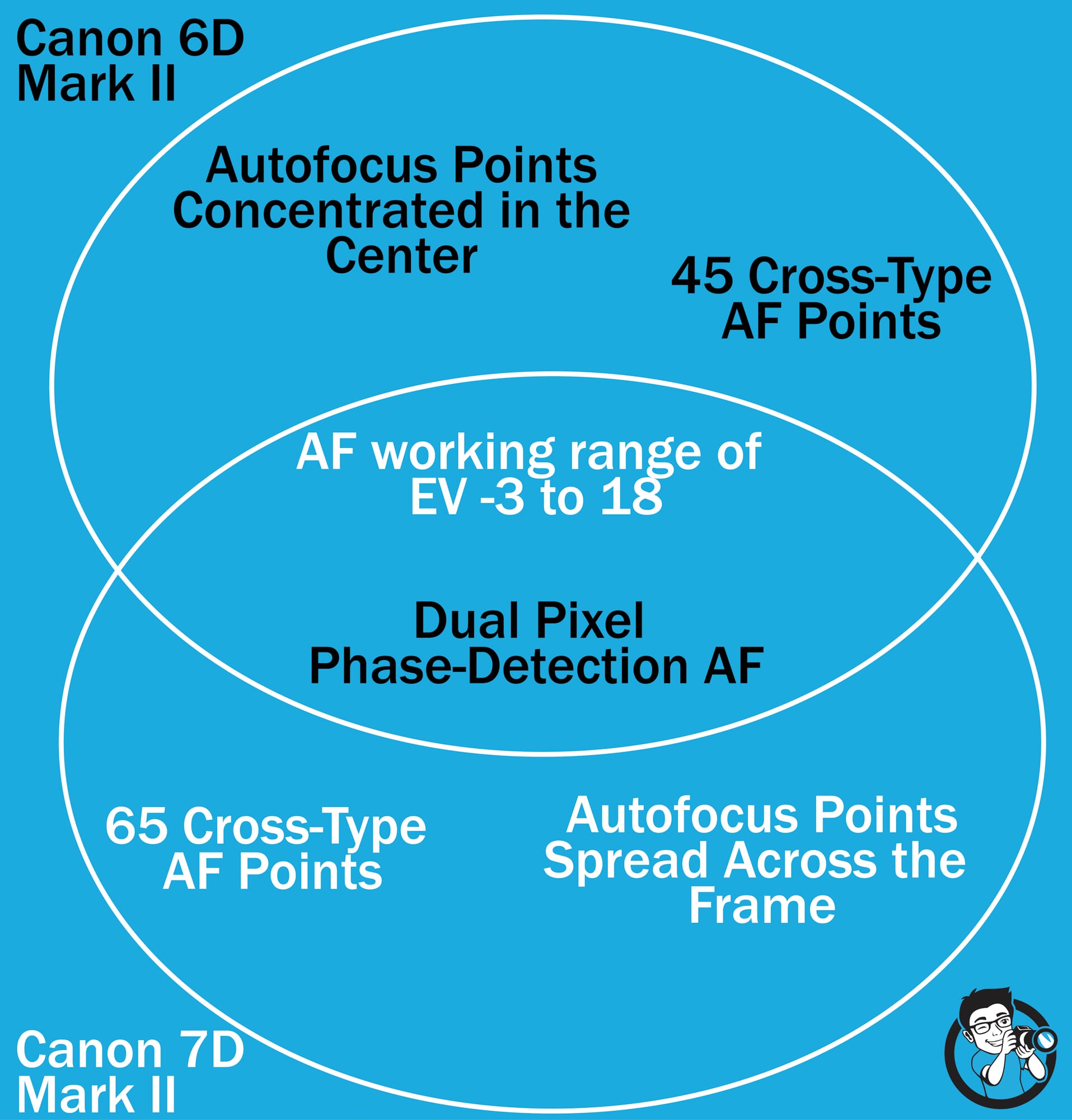
While both these cameras offer strong autofocus systems, the Canon 7D Mark II takes the prize. The additional 20 cross-type AF points make for better, faster tracking of moving subjects, while the wider autofocus point spread guarantees more flexibility when focusing.
Related Posts
Now, Don’t Write Off the Canon 6D Mark II…
45 cross-type AF points is a respectable number! And the dual pixel autofocus offers fast and accurate autofocus when using Live View or video modes. But the Canon 7D offers those same features and more. If you’re an action photographer, top-of-the-line autofocus is key.
Let’s take a brief look at the continuous frame rates:
- Canon 6D Mark II: 6.5 frames-per-second for 31 RAW photos
- Canon 7D Mark II: 10 frames-per-second for 21 RAW photos
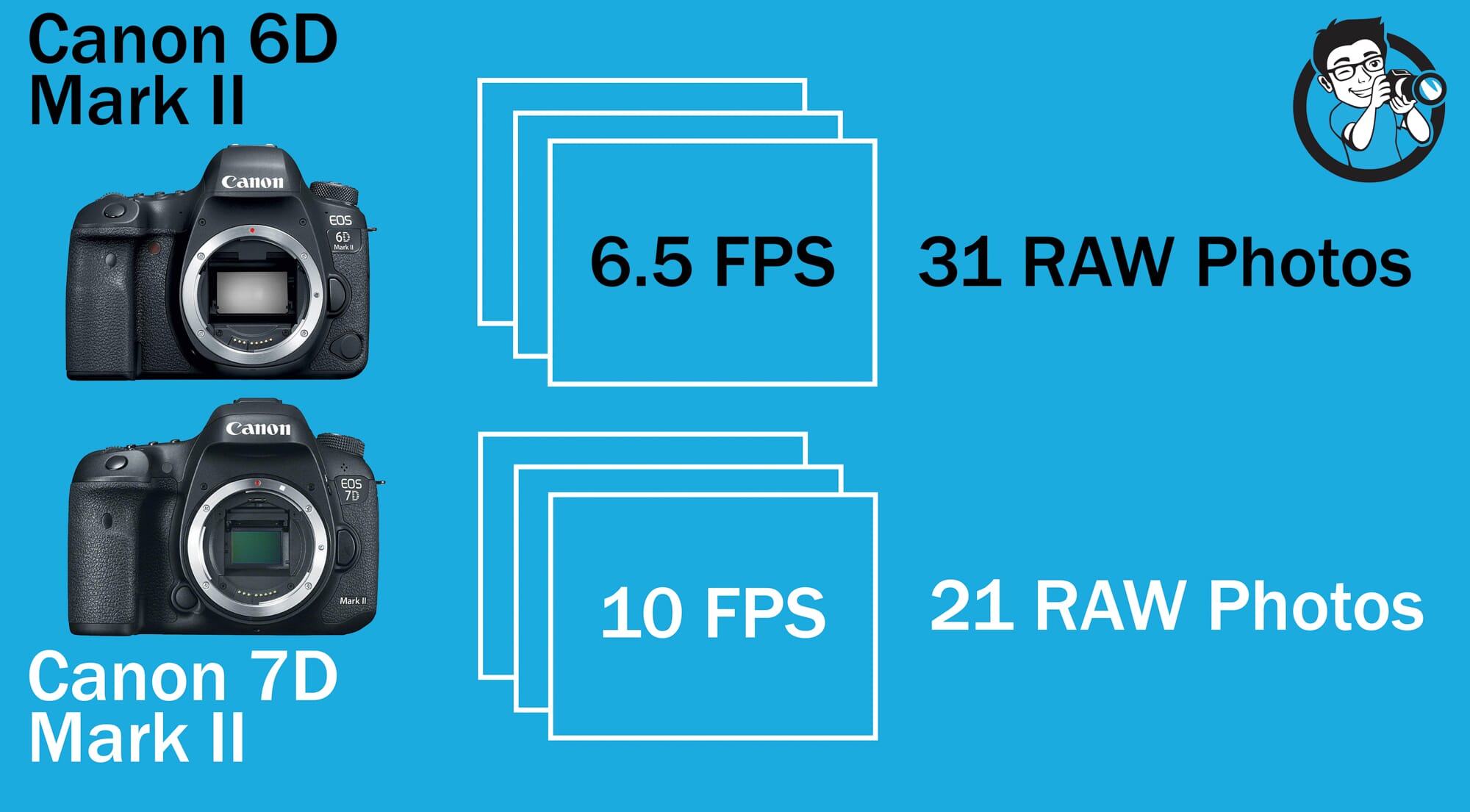
The Canon 7D Mark II is once again the clear winner. Action photographers of any kind will love the 7D’s 10 fps.
Winner: Canon 7D Mark II
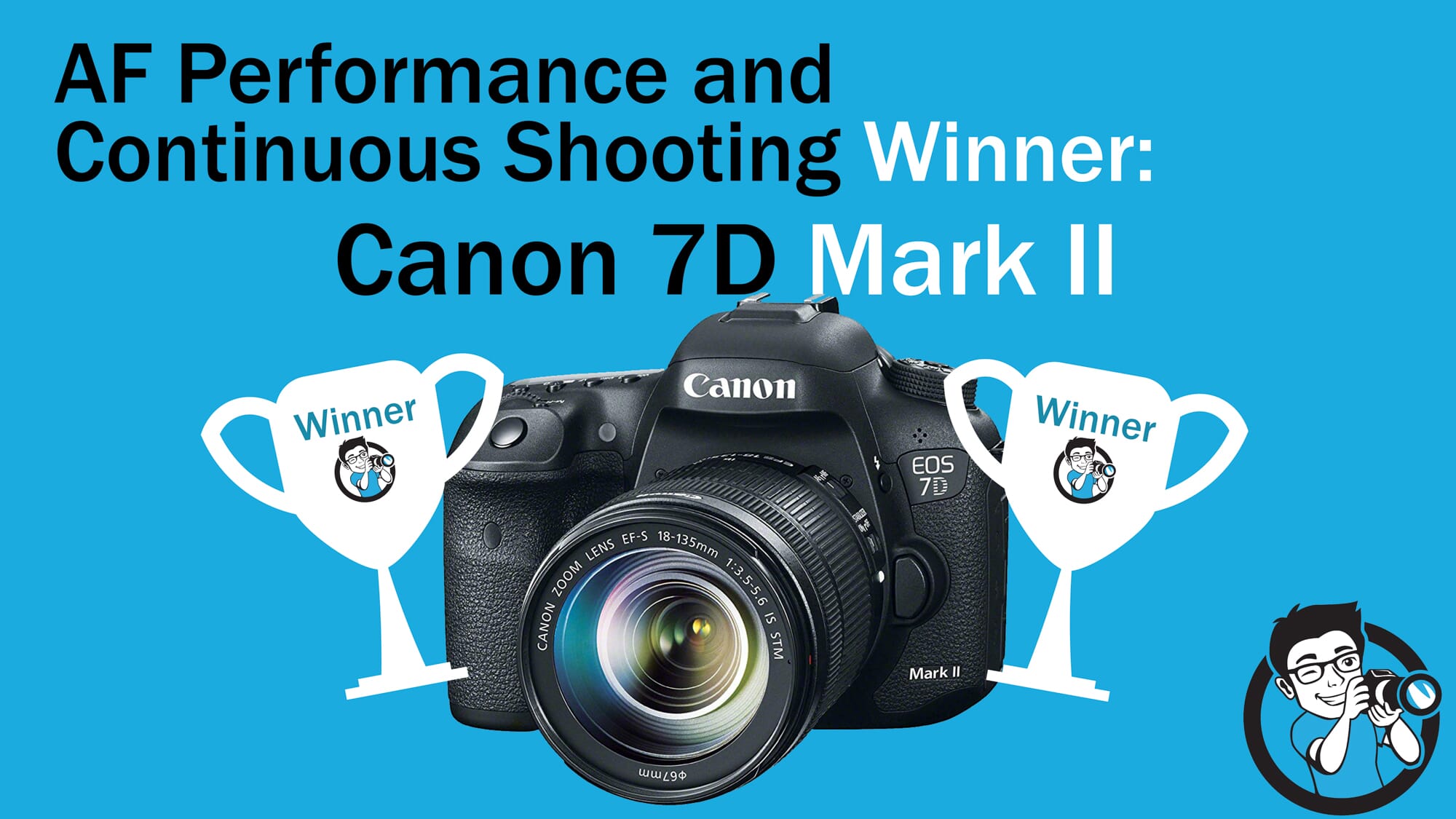
5. Image Quality
Now it’s time to talk about the thing you’ve all been waiting for:
Image quality.
The Canon 6D Mark II offers a powerful full-frame sensor. Normally that guarantees great high-ISO performance and high dynamic range.
But how does it hold up in real life?
Tests of the 6D Mark II show that ISO performance is fairly strong. Stronger than the 7D Mark II, which is limited by its crop sensor.
Unfortunately, the positives stop there.
The Canon 6D Mark II has a noticeably worse dynamic range than the Canon 7D Mark II. This means that you’ll capture less detail overall. That’s a big concern for landscape photographers in particular.
Of course, the Canon 6D Mark II still offers a higher megapixel count than the Canon 7D Mark II (26.2 MP vs 20.2 MP). And the full-frame sensor is especially useful to landscape photographers who want to take advantage of their wide-angle lenses.
On the other hand, bird and wildlife photographers will appreciate the additional reach of the 7D’s crop-sensor (which will magnify all lenses by 1.6x).
Winner: Draw
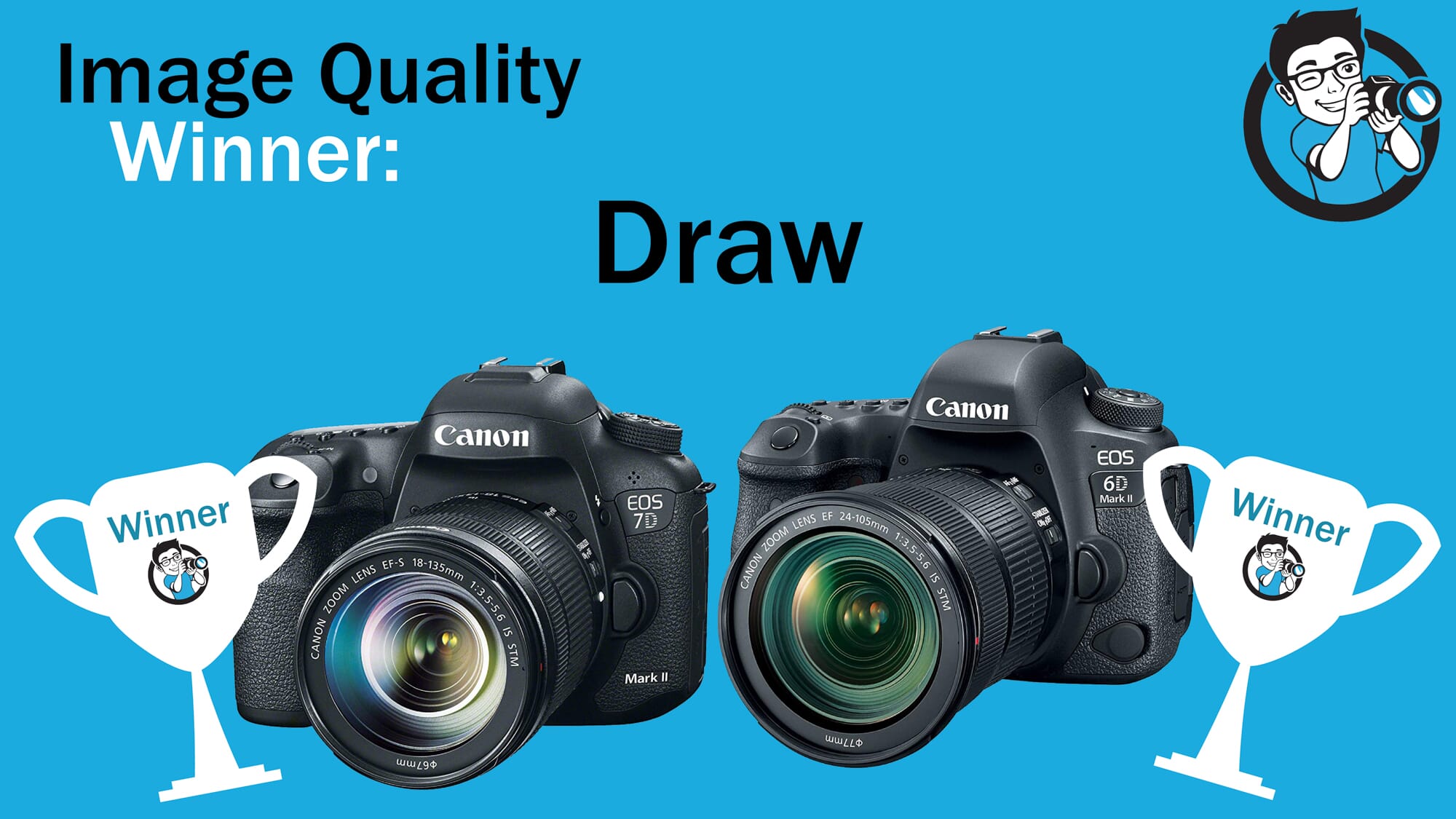
6. Canon 6D Mark II vs Canon 7D Mark II: Which Camera Should You Choose?
Now that you’ve learned about the features of these two cameras, it’s time to ask yourself:
Which is right for you?
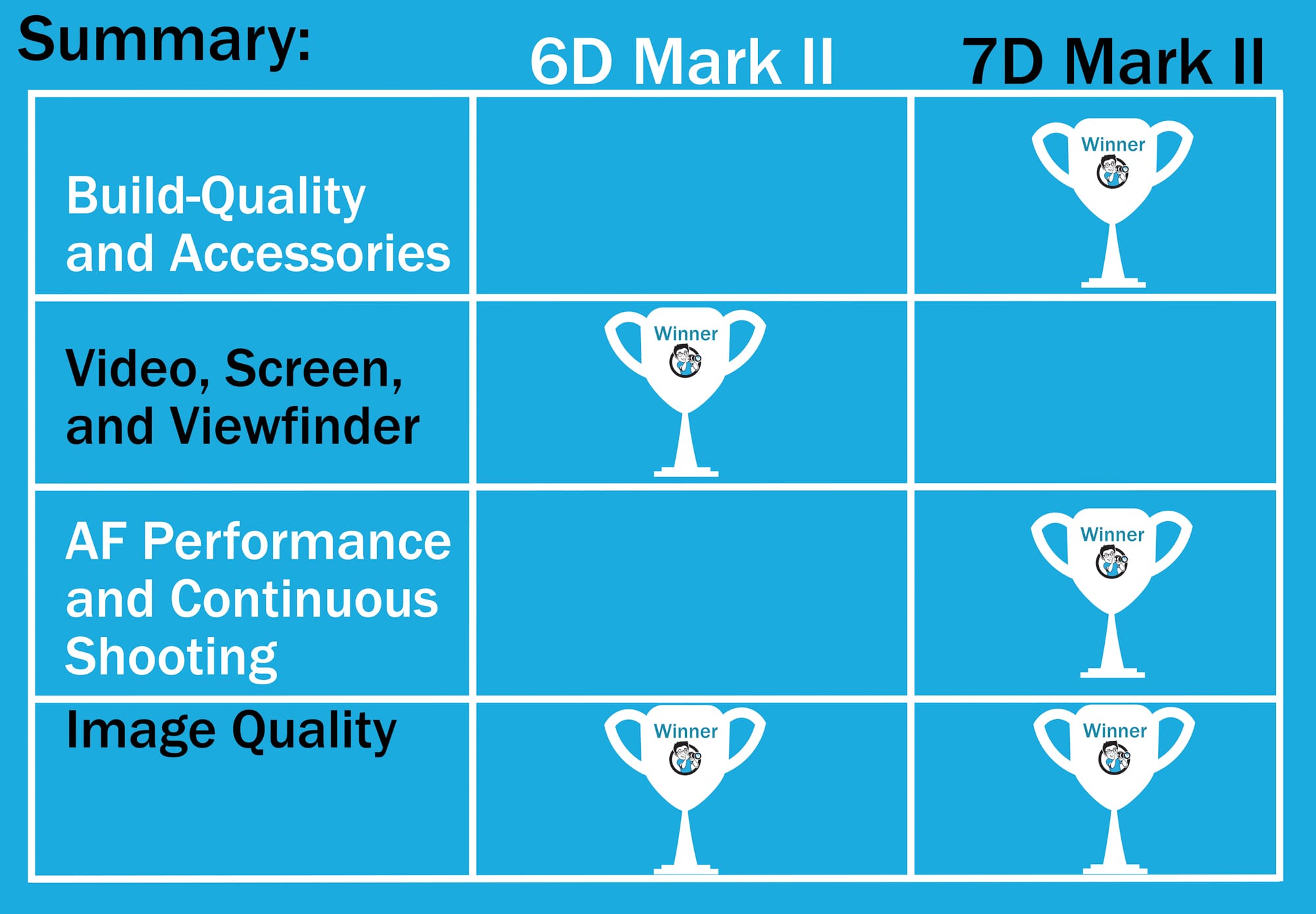
Let’s take a final look at the pros and cons of both:
Canon 6D Mark II
Pros:
- Full-frame sensor
- High resolution
- Strong high-ISO performance
- Good autofocus
- Long battery life
- Touchscreen
Cons:
- Limited dynamic range
- Single card slot
- Mediocre continuous shooting rate
Canon 7D Mark II
Pros:
- High-performing autofocus
- Fast continuous shooting
- Rugged camera body
- Dual card slots
- Crop factor useful for wildlife shooters
Cons:
- Mediocre high-ISO performance
- Shorter battery life
- Lower resolution
- Smaller sensor not ideal for landscape photographers

Here’s the Bottom Line:
You should get the Canon 6D Mark II if:
You’re a photographer who prioritizes image quality over camera speed and durability. In other words, you take a slow, deliberate approach to your images and you’re not much of an action photographer.
You should get the Canon 7D Mark II if:
If you need the additional reach, fast autofocus, and a high continuous frame rate. This is a great camera if you often shoot action, and you don’t mind sacrificing a bit of resolution and high-ISO performance for speed.
Invalid table id.
Disclosure/Disclaimer: As an Amazon Associate, we earn from qualifying purchases. Certain content was provided "as is" from Amazon and is subject to change or removal at any time. Product prices and availability: Amazon prices are updated daily or are accurate as of the date/time indicated and are subject to change. Any price and availability information displayed on Amazon.com at the time of purchase will apply to the purchase of this product.
7D mark II, 670 shots per charge?
You are just quoting CIPA figures. CIPA ratings are not useless (you can compare one camera against another) but the actual numbers they give are irrelevant to actually using the camera.
No-one in their right mind would shoot 50% of the time with the built in flash. In real life the 7D II gives well over a 1,000 images per charge if you use the OVF, don’t use the flash and don’t chimp much.
As for IQ, so far as resolution goes it really comes down to the lens. To get the most out of the 7D II and its tiny pixels needs a high resolving lens. But even with a lensthta was designed for full frame sensors with larger pixels the 7D II has some advantages such as less deterioration towards edges and corners and, because of the higher sampling frequency, less likelihood of moire and other artefacts .
Hi Tom, thanks so much for the comment! Absolutely, I’m citing CIPA figures (and I’ll edit the article to make that clear to prevent any confusion). I understand your point about CIPA numbers being less than ideal for thinking about actual, on-the-ground photography, but I do think they’re more useful than you’re making them out to be – while it’s true that photographers are rarely going to be firing their flash every other shot, you can use a CIPA battery life as a benchmark. For example, a camera rated at 800 shots will probably get in the 1000+ range when using only the optical viewfinder, but fewer than 600 shots or so when using only Live View. Based on this, you can start to determine whether the camera will work for your purposes.
In terms of image quality, I agree that lens resolution matters greatly, but camera resolution matters, too. If you’re getting equal lens resolution on both cameras, having an extra 6 megapixels to crop or print is going to make a difference (though the significance of that difference will change depending on the resolution of the lens).
As for image quality deterioration at the corners, I agree that the 7D Mark II gets a boost there depending on the lens, but the smaller sensor also stretches the lens’s resolution capabilities, so that’s worth considering, as well.